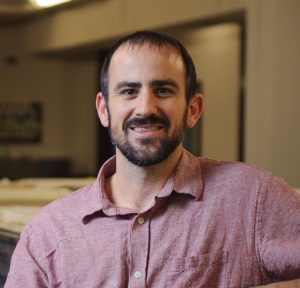https://www.ua.edu/news/2020/01/data-on-land-use-deficient-without-accounting-of-illicit-activity/
Data on Land Use Deficient Without Accounting of Illicit Activity
- January 13th, 2020
For a full picture of how humans change land, decision makers need to see the scope of illicit activities, according to a recently published paper that includes work from a scientist at The University of Alabama.
For instance, an estimated 40 percent of the world’s deforestation comes from illicit operations, or activities either illegal or outside a local system’s usual customs, according to a review of research in the paper published in Nature Sustainability.
“Understanding what causes the land change and what actors are involved feeds directly into how you respond,” said Dr. Nicholas Magliocca, UA assistant professor of geography and co-author of the study. “To do some sort of policy or law enforcement intervention we need to have the ability to attribute land use changes we observe between illegal and legal actors and causes.”
The paper was led by Dr. Beth Tellman, a postdoctoral research scientist at Columbia University who performed much of the work for this paper as a graduate student at Arizona State University. Other co-authors on the paper include Dr. Billie Turner II at ASU and Dr. Peter H. Verburg at Vrije Universiteit Amsterdam in the Netherlands.
In the paper, researchers lay out a path to incorporate illicit activities into analysis of land-use change that draws on remote sensing as well as several other disciplines including social, political and land system sciences.
“There’s no one discipline, no one research methodology that can do this,” Magliocca said. “You have to piece together all these different perspectives and different types of evidence because the data is always going to be insufficient.”
Illicit activities can include extracting sand from non-permitted areas, an illegal gold mine, forest loss from production or trafficking of narcotics, corrupt urban zoning or harvesting natural resources from protected areas, among others.
“Whenever there is an opportunity to make large sums of money from land-dependent commodities in areas of weak governance or in remote locations, there will be motivated actors to work outside the system,” Magliocca said.
Even though changes to the Earth and its resources come from illicit activities, it is difficult for researchers and policy makers to know when and where these illicit operations occur or if a land use is from an illicit activity, he said.
“It’s a consistent blind spot in land system science and any kind of land-use change analysis,” Magliocca said.
The missing data, in turn, makes it hard to design responses. Policy makers might struggle with whether a regulation could make it harder to profit from the illicit activity or whether a law enforcement investigation would curtail the activity, for instance.
Simply knowing the reason for a use of the land helps bring an awareness to the problem, Magliocca said.
“We’re trying to make clandestine land transactions visible and treating it the same way you do legal, conventional land changes,” he said.